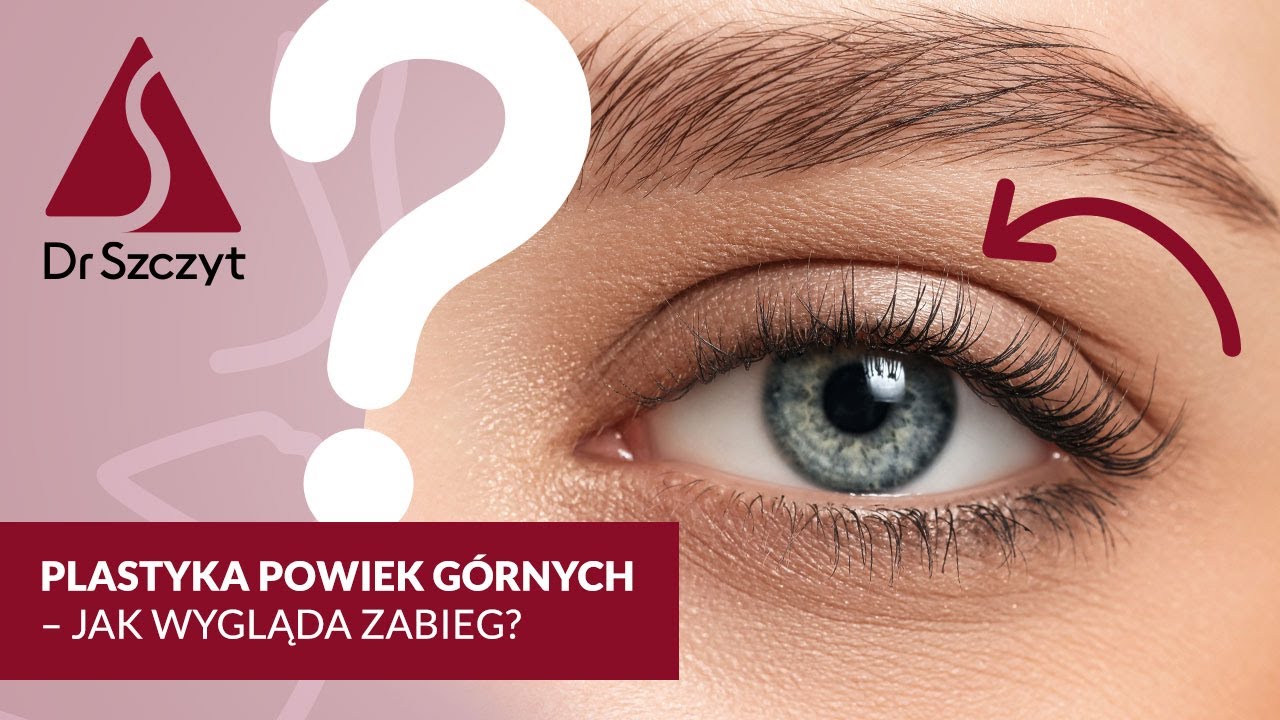Blepharoplasty - what results can be achieved after eyelid correction surgery?

The skin around the eyes is extremely thin and delicate, making this area the fastest to show signs of passing time. Sagging skin, bags under the eyes and deep wrinkles are defects that take away from the look of youthful radiance and make the eyes look tired. Sometimes the excess skin of the upper eyelid is so large that it impairs the field of vision.
What is blepharoplasty?
Eyelid plasty(blepharoplasty) involves the removal of excess skin and so-called fatty hernias, if present. This procedure can involve the upper eyelids, lower eyelids or both at the same time.
Upper eyelid plasty:
- It is directed at removing excess loose and flabby skin, allowing the eye to "open up",
- Reduces wrinkles and improves the aesthetics of the look.
Lower eyelid plastic surgery focuses on removing bags under the eyes and tightening and smoothing the skin.
Indications for treatment
Blepharoplasty is a procedure especially recommended for people who are bothered by the overhang of flaccid eyelid skin and the presence of so-called "fatty pseudofollicles", which, in the case of the lower eyelids, protrude under the skin and give the impression of bags under the eyes. The overhang of flaccid skin of the upper eyelids is sometimes so large that it limits the field of vision. The drooping, loose skin around the eyes gives the face a tired, sad expression, making patients feel less confident. Blepharoplasty effectively addresses these problems, restoring a younger, fresher appearance to the face and improving daily comfort.
Who can benefit from blepharoplasty?
Ideal candidates for blepharoplasty are middle-aged and elderly patients whose skin has lost elasticity, resulting in drooping eyelids. The procedure also benefits younger patients who have a genetic predisposition to under-eye bags. It is important for patients to have realistic expectations of the results, understanding that blepharoplasty improves the appearance of the eyes, but will not stop the aging process forever.
Read also: What are the uses of canotopexy?
How does the eyelid plastic surgery proceed?
Before blepharoplasty surgery, the patient must undergo a detailed consultation with a plastic surgeon. During the visit, expectations, goals of the surgery and possible risks and complications are discussed. The doctor performs a health assessment, taking into account medical history. Diagnostic tests, i.e. blood tests, ECG, are also required to rule out potential contraindications to the procedure.
The operation is performed under intravenous or local anesthesia. Incisions on the skin of the eyelids are made in such a way that the scar is located in the fold of the upper eyelid or under the eyelashes of the lower eyelid and becomes virtually invisible after healing. After the operation, a dressing is placed over the wounds. The sutures are removed on day 5-7 after the operation. The percentage of complications is low, slightly higher for lower eyelid surgery. Depending on the type of surgery, excess skin and periorbital fatty tissue (known as fatty pseudohyperplasia) is removed.
After treatment
Immediately after surgery, the eyelids will swell and bruises will appear on them, which is a normal consequence of the procedure. During the first days of recovery, there may be some pain, which is worth alleviating with painkillers prescribed by the doctor. Cool compresses on the eyelids are also recommended.
Recovery process
Recovery from the procedure usually takes 2 to 4 weeks. During this time, patients should avoid strenuous exercise, and take care of proper hygiene and skin protection. As advised by the doctor, it is important to wear sunglasses to protect the eyes from harmful UV rays. What's more, for several days after the procedure, any situation that may lead to irritation of the sensitive skin around the eyes should be avoided, including limiting the use of electronic device monitors.
Control of effects
The final results of the procedure are visible after about 3-6 months, when the skin has fully healed and swelling and bruising have subsided. Regular follow-up visits to the plastic surgeon allow you to monitor the healing process and make sure that the result meets expectations. With proper post-operative care and adherence to recommendations, the effects of blepharoplasty will last for many years, improving not only the appearance of the face, but also the patient's comfort and quality of life.
Why opt for blepharoplasty?
One of the main reasons to consider blepharoplasty is the long-lasting rejuvenation effect. Although the aging process of the skin is not stopped, patients can enjoy a more youthful appearance of the eyes and entire face for many years to come. The procedure effectively improves skin tone, reduces excess fatty tissue and restores a fresher look, with long-lasting effects on facial aesthetics. Minor touch-ups may be necessary as time passes, but the overall lifting effect persists.
Improved eye and facial appearance translates into increased self-confidence. Psychological benefits include improved quality of life, greater willingness to be socially and professionally active, and satisfaction with one's appearance.
FAQ
What techniques are used in blepharoplasty and how do they affect the results?
Depending on the patient's needs, a transconjunctival or transconjunctival incision is used. The choice of method affects the location of scars and recovery time, as well as the final appearance of the eyelids.
Does the age of the patient matter for the effects of blepharoplasty?
Although the procedure is effective at any age, younger people usually have better skin elasticity, which affects the final results. Older patients require a more comprehensive approach, due to a greater degree of skin laxity.
What factors can affect recovery time after surgery?
Recovery time may vary depending on the patient's individual predisposition, the technique used and adherence to postoperative instructions. People who smoke or have chronic diseases (which are not a contraindication to surgery) will need a longer recovery time.
What are the most common myths about blepharoplasty?
Some people believe that blepharoplasty is purely an aesthetic procedure, ignoring its functional benefits. A popular but misconception is the issue of immediate results - the full results are visible only after several months.
What are the alternatives to blepharoplasty for people who do not want to undergo surgery?
Those looking for less invasive solutions can consider botulinum toxin treatments and hyaluronic acid-based fillers, which help reduce wrinkles (known as crow's feet), improve the appearance of the tear valley and eliminate dark circles under the eyes. On the other hand, mesotherapy and biostimulators improve the condition of eyelid skin by hydrating and stimulating collagen production. In addition, laser therapy and/or micro-needle microneedling can be used to smooth the eye area and improve skin tone.








.jpg)






